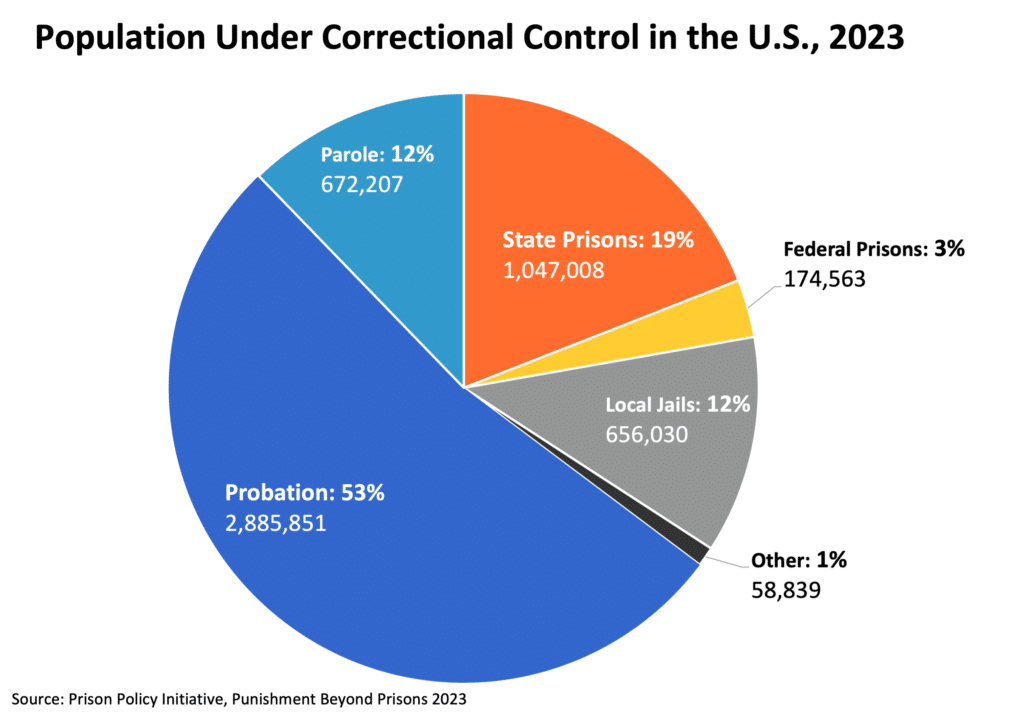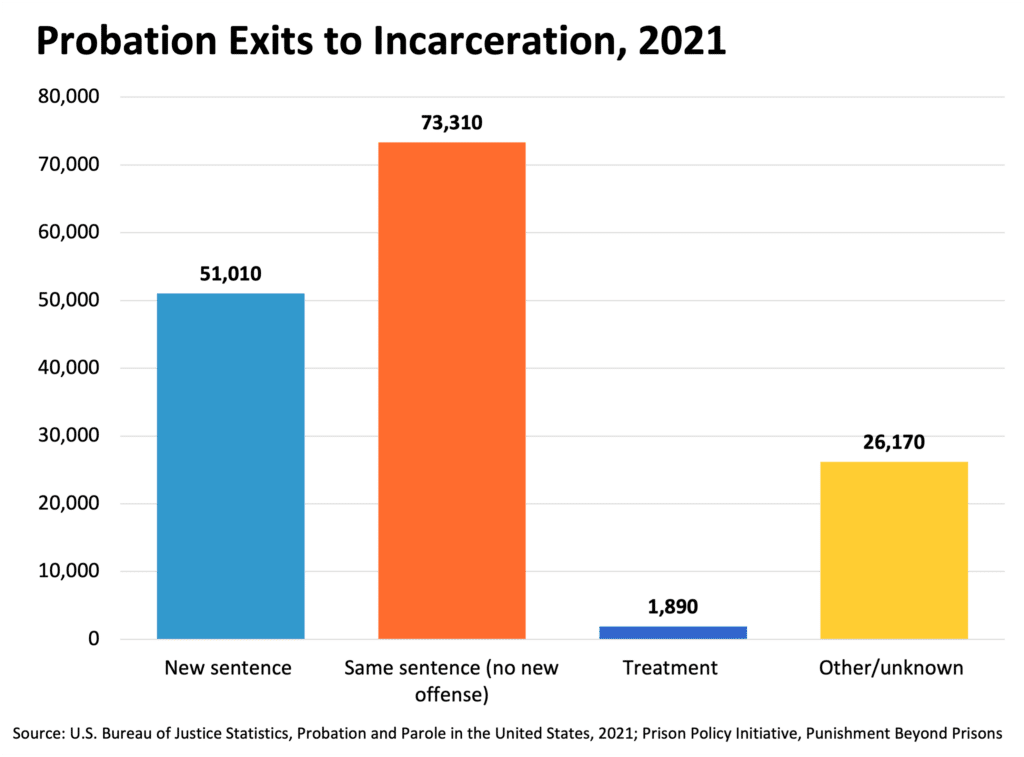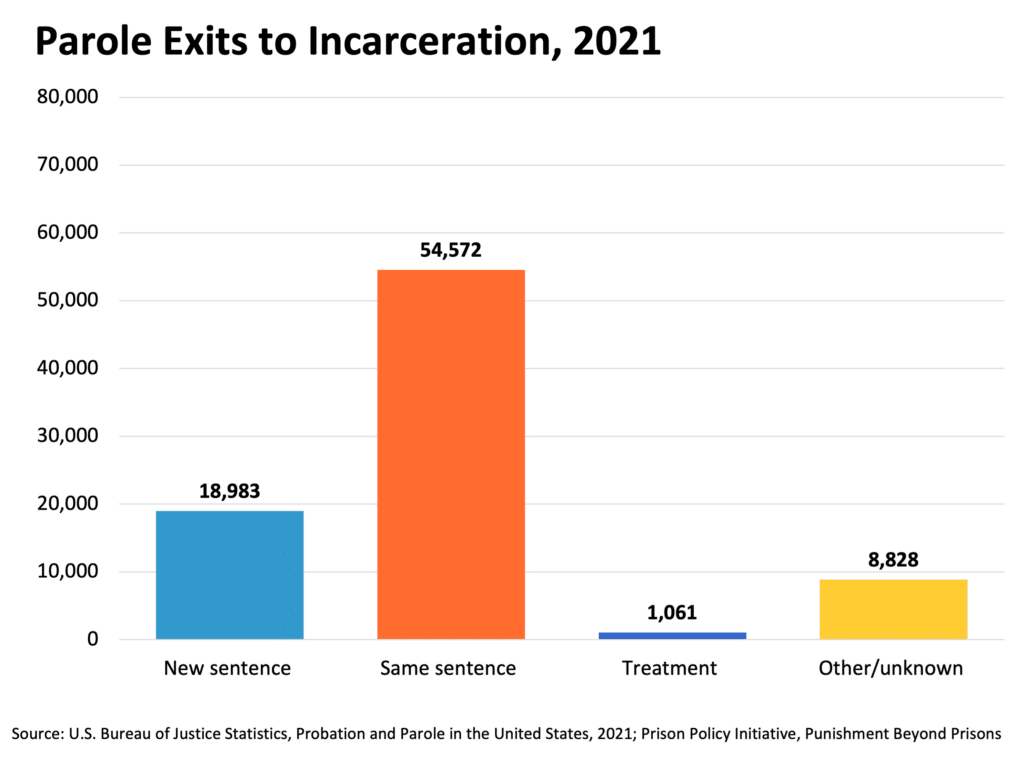Mass incarceration in the United States has received much public attention in recent years, and rightfully so––there are currently 1.9 million people incarcerated in U.S. jails, prisons, and other detention facilities. That number translates to an incarceration rate of about 565 per 100,000 residents nationwide, much higher than the incarceration rates of other developed countries.
But only looking at the number of people behind bars greatly understates the scope and scale of the criminal legal system in the United States. Data from a new report from the Prison Policy Initiative shows that nearly 3.7 million adults are on community supervision programs like probation and parole. That’s nearly twice the number of people incarcerated in jail or prison.

Community supervision refers to several programs that allow criminal offenders to remain in their communities rather than being incarcerated, albeit under varying degrees of oversight by an officer assigned to their case. The two main forms of community supervision are probation and parole.
Probation serves as an alternative to imprisonment or as an intermediate form of punishment. When someone is sentenced to probation, the judge determines the duration of supervision and sets specific conditions that the probationer must follow.
Parole, meanwhile, enables individuals sentenced to incarceration to serve a portion of their sentence within the community instead of behind bars. Judges typically have some discretion in determining the minimum incarceration period before parole eligibility. A parole board then evaluates various factors to decide whether to grant parole.
According to the Prison Policy Initiative report, there are currently 2.9 million people on probation and nearly 670,000 on parole. Together, those numbers translate to roughly 1,034 people under community supervision per 100,000 residents nationwide. Notably, community supervision populations vary dramatically between states. At the low end, about 360 per 100,000 residents are under community supervision in Maine. But in Georgia, that figure is an astronomical 3,176 per 100,000 residents, more than 3% of the state’s population.
While community supervision programs have numerous advantages, research indicates that parole and probation may inadvertently contribute to the problem of mass incarceration. Individuals under supervision must adhere to strict rules and procedures. Violations of these rules that are not considered criminal offenses are classified as “technical violations.” Examples of technical violations include missing appointments with the supervising officer, breaking curfews, falling behind on legal financial obligations, and breaching other conditions of supervision.
Some technical violations go undetected or do not result in any significant consequences. Others may result in higher intensity supervision––often in the form of additional conditions and more frequent meetings with officers assigned to manage their case. Repeated or serious technical violations may result in the revocation of community supervision or admission into mandatory treatment. According to data from the U.S. Department of Justice’s Bureau of Justice Statistics, more than 230,000 people on community supervision spent time in jail or prison in 2021, mostly due to technical violations rather than new criminal offenses. Less than half of those who exited parole or probation in 2021 successfully completed the terms of their supervision.


Lawmakers should consider implementing the following measures to improve their state’s community supervision programs:
Shortening Maximum Sentence Lengths: Maximum sentence lengths vary widely across states. By reducing these sentences, individuals can be granted more timely opportunities for successful reintegration into society. This approach acknowledges that excessively long periods of supervision can hinder rather than support the transition back to a productive life.
Streamlining Conditions: The number of conditions placed on individuals under community supervision should be carefully evaluated and reduced when appropriate. An individualized focus on essential conditions that directly relate to protecting public safety and fostering successful rehabilitation can be more effective and manageable for both individuals and supervising officers.
Shifting Focus towards Reintegration: Instead of primarily emphasizing punishment and surveillance, community supervision should be oriented toward fostering successful reintegration. By offering comprehensive reentry programs, access to education and employment opportunities, and tailored support services, individuals under supervision can more effectively rebuild their lives and become productive members of society.
Targeted Application of Drug Testing: Drug testing protocols within community supervision should be re-evaluated to ensure they are appropriately targeted and aligned with each individual’s unique risks and needs. By tailoring drug testing requirements to individuals with substance abuse histories or high-risk profiles, supervising agencies can allocate resources more effectively and avoid unnecessary incarceration.
Elimination of Supervision Fees: Imposing financial burdens on individuals working to reintegrate into society is counterproductive. States should consider eliminating supervision fees and other monetary costs associated with community supervision. By removing financial barriers, individuals can focus on their rehabilitation efforts and allocate resources towards crucial needs such as housing, education, and supporting their families.
Leveraging Technology: Embracing technological innovation can significantly improve probation and parole outcomes. As a recent Reason Foundation report found, implementing simple measures like sending text-message reminders for upcoming supervision appointments can enhance compliance and reduce the risk of technical violations. Additionally, electronic monitoring systems and virtual check-ins can streamline the supervision process while enhancing public safety.
These criminal justice reforms are imperative to ensure that community supervision fulfills its intended purpose of reducing mass incarceration and facilitating successful reintegration into society. By implementing these reforms, lawmakers can foster a more equitable and effective system that supports individuals in the transition to a productive and law-abiding life.

